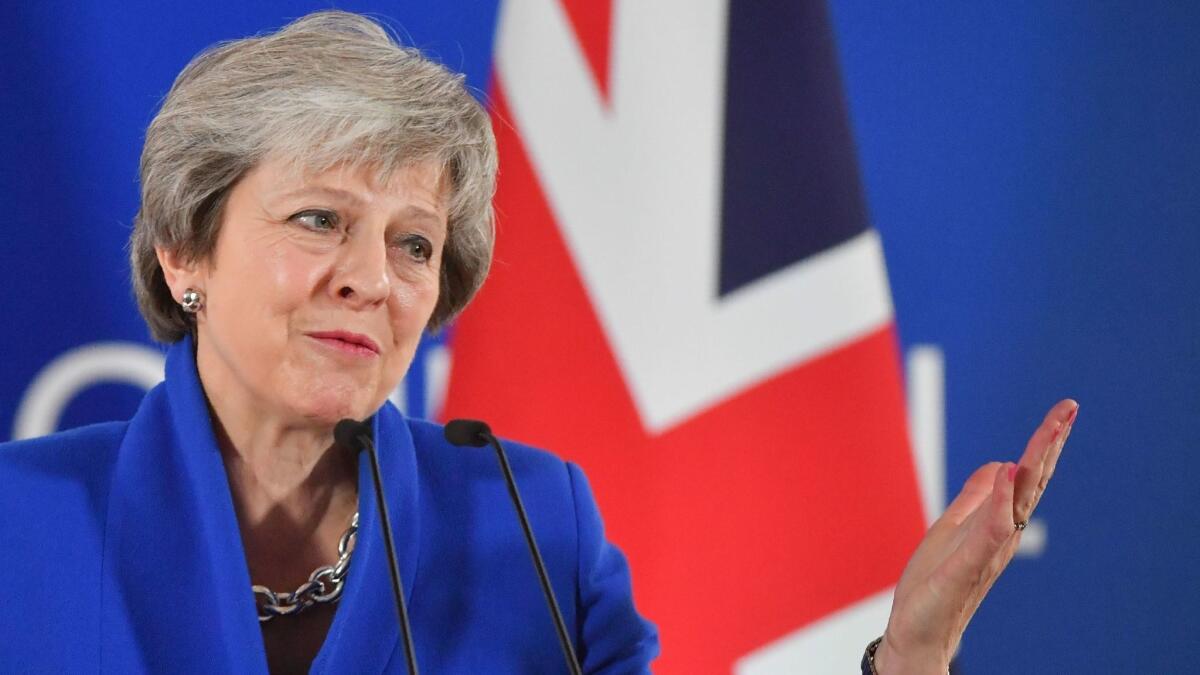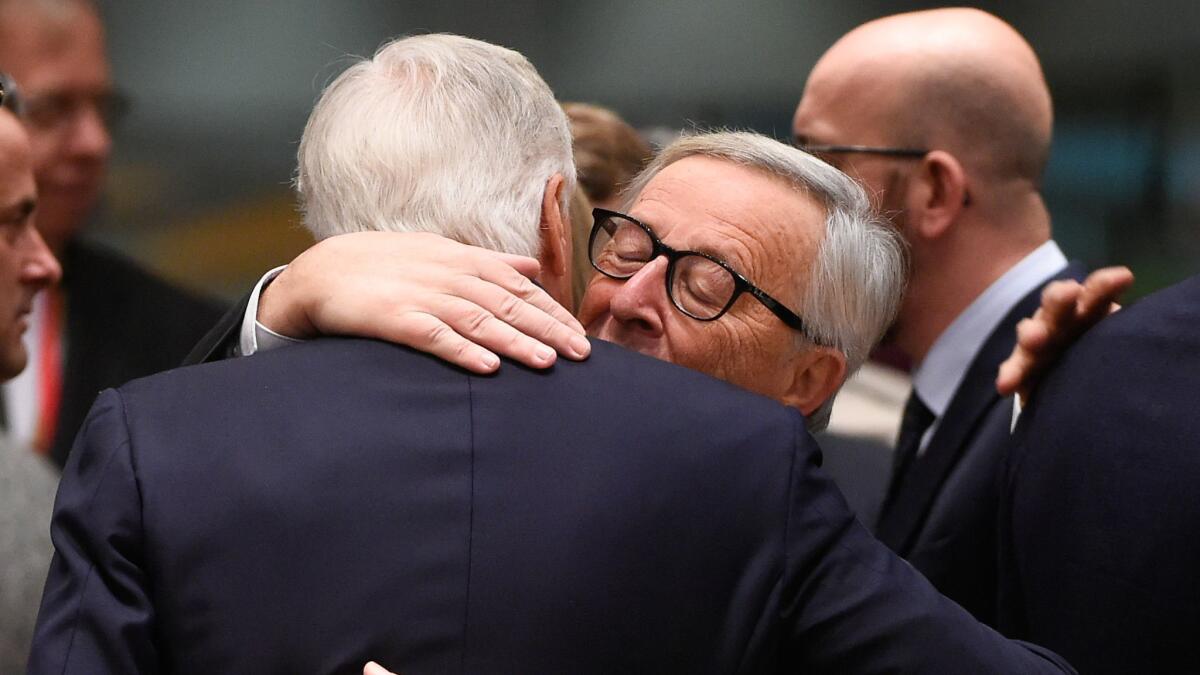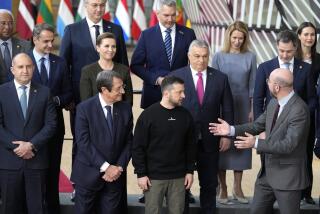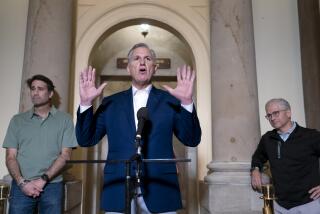EU leaders agree to ‘Brexit’ terms, saying it is the best deal Britain can get

Reporting from London — After 20 months of negotiations and more than four decades of membership, it ultimately took just one hour for European Union leaders to agree to the terms of Britain’s “Brexit” divorce deal.
Declaring it a “moment of deep sadness,” European Commission President Jean-Claude Juncker and European leaders appeared somber at the conclusion of their Brussels summit on Sunday. But they reiterated the message that British Prime Minister Theresa May has been hammering home for days: This is the best deal that Britain is going to get.
“This is the deal,” Juncker said. “It is the best deal possible and the European Union will not change its fundamental position when it comes to this deal.”
Sunday’s meeting of EU leaders brought an end to the often-fraught negotiations that began in March 2017 after Britain’s vote in a divisive June 2016 referendum to leave the bloc.
“I think we managed to make a diplomatic piece of art,” German Chancellor Angela Merkel said of the deal.
The nearly 600-page withdrawal agreement lays out in intricate detail how Britain will extricate itself from the remaining 27-member bloc. It includes a nearly $50-billion “divorce bill” that Britain must pay to the European Union, and it secures the rights of the more than 3 million EU citizens living in Britain and 1 million British nationals living in Europe.
It also ensures that there will be no hard border for goods between Ireland, which will remain a EU member, and Northern Ireland, which will leave the bloc along with the rest of Britain, even if future trade talks stall.
Throughout the negotiations, the issue involving the Irish border proved to be the most contentious amid fears that creating any sort of checkpoint could put a strain on the 1998 Good Friday Agreement, which brought peace to Northern Ireland after decades of conflict.
A separate 26-page political declaration also sets out what Britain and the EU’s future trade and security relationship will look like, although the document is not legally binding.
Negotiations on the post-Brexit relationship will begin in earnest after Britain formally leaves on March 29, 2019. After that date, Britain will still have to follow EU regulations and will remain within the single market until the end of December 2020, when a deadline has been set for a future trade deal.

As the Brexit withdrawal deal was approved Sunday, May was wished luck by many EU leaders for the next hurdle she faces: getting Parliament to approve it, which is by no means guaranteed. Indeed, this negotiated settlement appears to have left no one in Britain satisfied.
Die-hard Euroskeptics feel that it keeps Britain too tied to the European Union and that leaving without any deal would be better than what is on offer. They want to sever all ties with the EU’s bureaucratic system and think Britain would flourish if it was allowed to be independent and able to forge trade deals with whatever country it chooses.
Ardent “remainers,” meanwhile, still passionately do not want to leave the EU at all; a campaign for a second referendum on EU membership — a so-called people’s vote — has gathered steam in recent months.
Organizers behind the movement say that the public was asked to vote for Brexit based on hypotheticals and that now that an agreement is in writing, Britons should be able to decide whether to approve the deal or keep the status quo.
Despite voting remain herself, May is adamant that a second referendum is off the table and would be a disaster for democracy.
She took on the unenviable task of leading a divided country through the Brexit process when her predecessor, David Cameron, resigned after staking his political career on campaigning to remain.
As the country reeled from the vote, May emerged, promising “together we will build a better Britain” that worked for the many, not just the privileged few.
But the path has been rocky.
Her Conservative Party is fiercely divided over the Brexit issue.
Each time talks with EU negotiators hit a deadlock or it appeared as if Britain might crash out of the bloc without any deal whatsoever, the value of the pound plummeted in an ominous forewarning of what could lie ahead.
Since the terms of the Brexit agreement became known two weeks ago, May has faced threats of a leadership challenge, Cabinet resignations — including by Brexit Secretary Dominic Raab — and heated debates in Parliament.
On Sunday, May’s critics again lined up to denounce her once again. Labor Party leader Jeremy Corbyn called the deal the “worst of all worlds” and said his party would vote against it.
Scottish National Party leader Nicola Sturgeon also called on Parliament to reject it, saying a “better alternative” should be considered.
And the Democratic Unionist Party, which May’s Conservative Party depends on for a parliamentary majority, has also expressed concerns about the so-called backstop plan that will guarantee no border will emerge between Ireland and Northern Ireland if a trade deal cannot be reached.
May has promised to put the deal to lawmakers for a vote before Christmas, describing it as “one of the most significant votes that Parliament has held for many years.”
On the eve of Sunday’s summit, the prime minister took the unusual step of penning a “letter to the nation,” which was published in all major British newspapers. In it, she pleads for public support and says leaving the EU next year will be “a moment of renewal and reconciliation for our whole country.”
“It must mark the point when we put aside the labels of ‘Leave” and ‘Remain’ for good and come together again as one people,” she wrote.
Her strategy is clear: If she can turn the tide of public support in her favor, she hopes, lawmakers will be compelled to follow suit. She has taken part in two radio phone-ins in recent days and will spend the next few weeks traveling the length and breadth of the country trying to sell her deal.
If May fails and she cannot get her divorce agreement through Parliament in December, what lies ahead is the great unknown.
Brexit could be the undoing of a second British prime minister, but there are few politicians who would eagerly step into the void. Calls for a second referendum would undoubtedly gather renewed pace, but it is unclear if the country could stomach another bruising vote.
Aiming her comments directly at her colleagues in Westminster after leaving the Brussels summit Sunday, May said: “The British people don’t want to spend any more time arguing about Brexit. They want a good deal that fulfills the [referendum] vote and allows us to come together again as a country.”
The deal on the table, the prime minister believes, is as good as it is going to get.
Boyle is a special correspondent.
More to Read
Get the L.A. Times Politics newsletter
Deeply reported insights into legislation, politics and policy from Sacramento, Washington and beyond. In your inbox three times per week.
You may occasionally receive promotional content from the Los Angeles Times.










